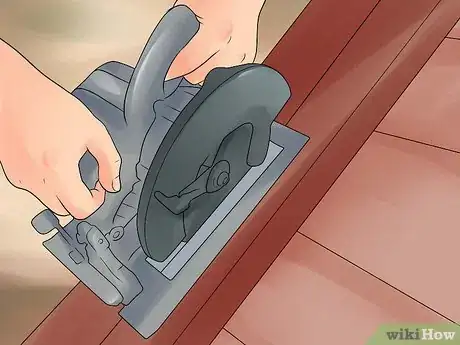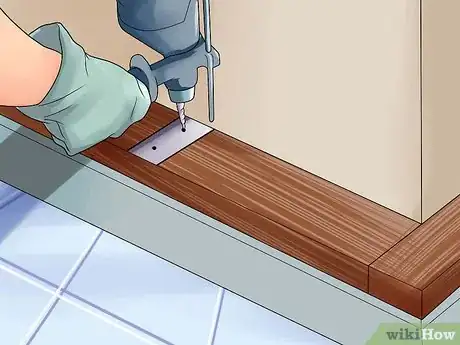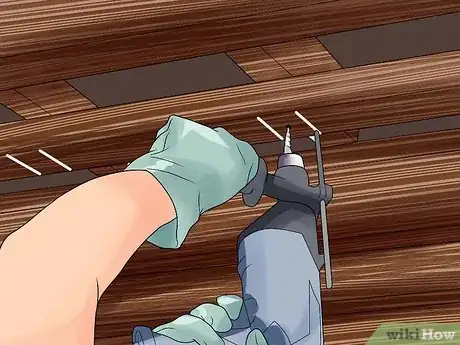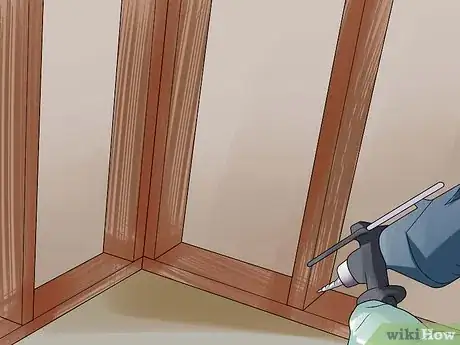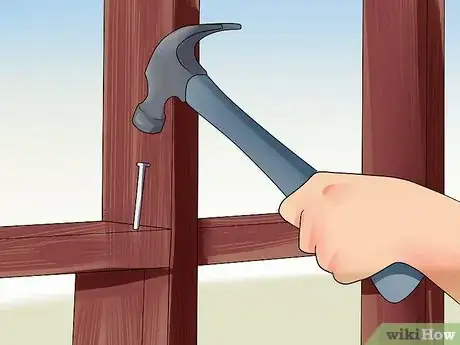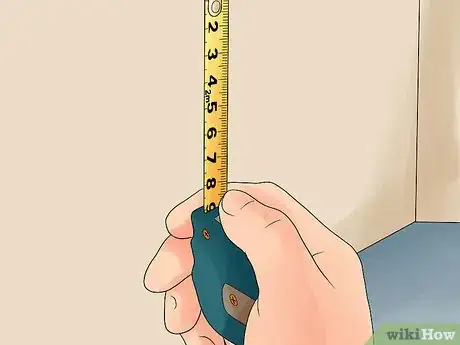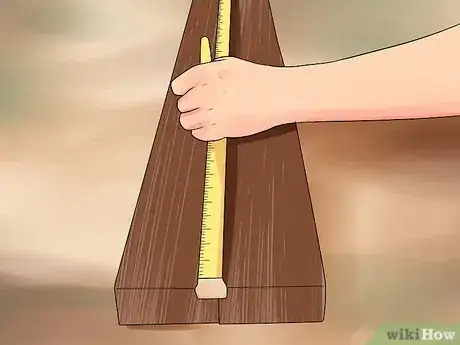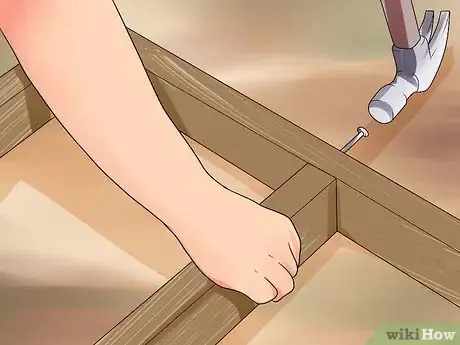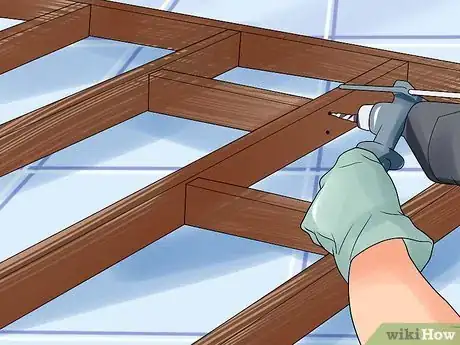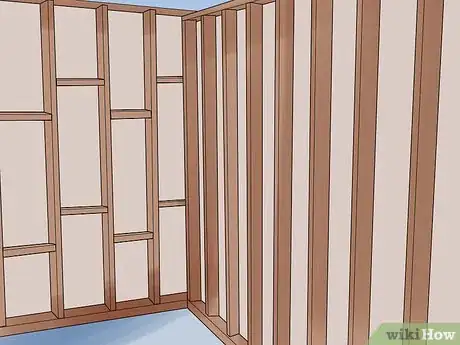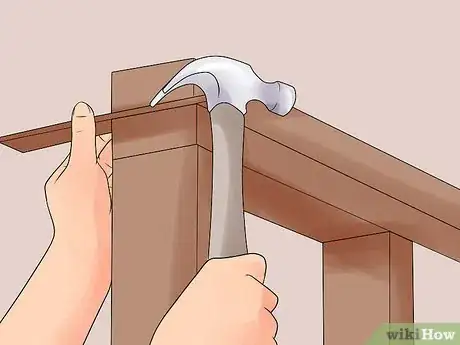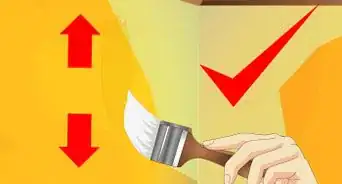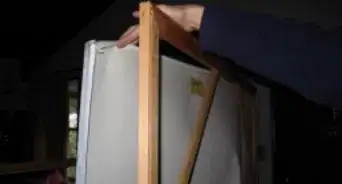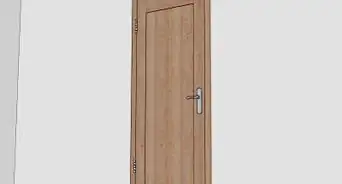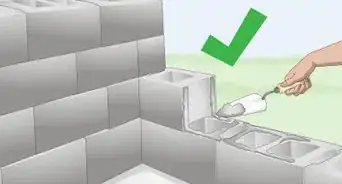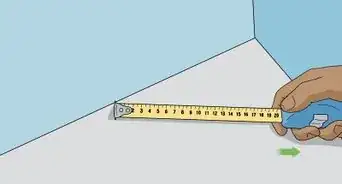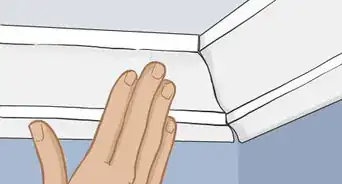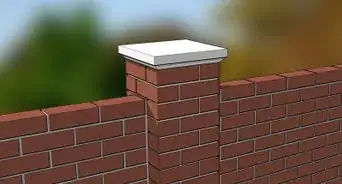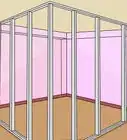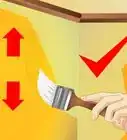This article was co-authored by Mark Spelman. Mark Spelman is a General Contractor based in Austin, Texas. With over 30 years of construction experience, Mark specializes in constructing interiors, project management, and project estimation. He has been a construction professional since 1987.
There are 7 references cited in this article, which can be found at the bottom of the page.
wikiHow marks an article as reader-approved once it receives enough positive feedback. In this case, 82% of readers who voted found the article helpful, earning it our reader-approved status.
This article has been viewed 507,619 times.
Framing a wall is the act of building a wooden frame to serve as the “skeleton” of a new wall. It is an important step to ensure a wall's strength and stability. Whether you're building a room from scratch or adding a wall to an existing space, read the steps below to learn how to properly frame a wall.
Steps
Layout and Foundation
-
1Plan the layout. Using a chalk line (a cheap tool for marking long, straight lines) and angle measuring tools, mark where the wall will be on the floor. Be sure to note any doors you intend to put in the wall.
- Be sure that the wall meets other walls at a 90 degree angle at all four corners. A slight deviation now will lead to a less-secure wall later.
- Note whether the joists (floor or ceiling girders) at the top of the room run perpendicular or parallel to your new wall.
-
2Cut the plates. Choose a strong, pressure-treated wood and cut 2” by 4” boards to twice the length of your wall, then divide those into groups of equal length. These are the plates, or base pieces, that will run just above and beneath the wall to anchor the frame. Make sure to always have two plates at the top.Advertisement
-
3Mark the plates for studs. Lay the top and bottom plates down next to each other. Measuring every 16” from one end, carefully mark horizontally across both plates until you reach the end. Since the measurements are 16" on center, you'll need to account for half the thickness and mark an “X” on the right side. These guidelines will help you know where to install studs.[1]
Framing a Basement Wall
-
1Secure the bottom plate. Now that you've marked and measured your plates, lay the bottom plate out along the chalk line that marks where the wall will be.[2] To make a stable wall, you will need to attach this plate to the concrete floor.[3]
- Use a power-actuated tool, also known as a Hilti or Ramset gun, to join the wood and the concrete. Load the tool with a small bullet and nail and then hit the end so that it engages the bullet and shoots the nail through the wood into the concrete.
- Once the two outer nails have been put in, follow your guidelines and put a nail in every 16” along the plate, near the center of the board.
-
2Attach the top plate. If the ceiling joists run perpendicular to the bottom plate, this is a fairly simple task; if they run parallel, you will need to do a bit more work first.[4]
- For parallel joists, attach short lengths of 2” by 4” blocking board perpendicularly between the two closest joists every 16”, and attach the top plate to these.
- For perpendicular joists, attach the top plate to the ceiling using the joists. Use a plumb bob (a carefully balanced weight that hangs from a line) to align the plates and double check by measuring to ensure that the top plate is directly above the bottom plate. Then, nail the top plate to the joists or blocking boards at every interval.
- As an alternative option, you can build the wall first and then stand it up. This may be an easier option, especially for amateurs.
-
3Install the studs. Studs are simply extra planks of 2” by 4” wood, or sometimes 2” by 6” for exterior walls, that provide support and definition for drywall and other finish surfaces.
- Measure and cut. Each stud board should be cut so that it fits snugly between the top and bottom plates without tilting.
- Insert the stud. Slide it end-on between the two plates, right over one of the nails in the bottom plate. Use a plumb bob and a corner to make sure the board is straight and squarely placed.
- Affix and repeat. Use a nail gun to insert 3” nails on both sides of both ends firmly at a 45 degree angle through the stud and into the top and bottom plates. Repeat this process until you have installed studs all the way down the frame.
-
4Install blocking boards. Blocking boards add a bit of additional structure, and also serve as areas where cabinets, towel bars, or grab bars are hung. They can also serve as fire breaks in case of a house fire. They are made from the same 2” by 4” boards you've used for everything else so far.
- Cut your blocking boards so that they will fit snugly between each stud, placing them about 4 feet (1.2 m) up, end-on between each stud. Firmly attach the blocking boards at both ends with 3” nails on both sides, hammered in at an angle of 60 degrees. You can vary the height slightly from block to block to make pushing tacks and nails into the finished wall a bit easier, if you want.
Framing a House Wall
-
1Take measurements in the space where the wall will go. You need to measure the total height of the wall and the width of the wall to be framed using a tape measure. The width will be used to measure the top and bottom frames, and the height will be used to measure the individual studs.
- In general, when you're building a wall for a non-basement room, you will build the entire frame on the floor first, and then lift and move it into place before attaching it to joists and beams accordingly. To do this properly, you must know exactly how long each stud has to be to make the wall the correct height.
- Buy enough 2 x 4 to fill the space. You'll need one stud the height of the wall every 16 in. along each frame, which will be the width of the wall. You can divide the width by 16 to quickly determine how many studs you'll need, and how much to buy.
-
2Cut studs and plates to the appropriate lengths, given your measurements. Using a circular saw, cut your plates and studs to match the measurements you took in the previous step. Start by cutting bottom and top plates that correspond to the width measurements you took for the wall to be assembled. Hold them against each other, to make sure every board is flush, and clean them up on the ends if necessary. Then cut the studs of the appropriate height.
- Each stud needs to have the width of the bottom and top plate subtracted from the total height of the measurement you took, to account for the added space.
-
3Mark where the studs will go on the top and bottom plate. Use your tape measure and mark along the top and bottom frames using a pencil line where the studs will go. Each stud will get three marks on the bottom plate and three marks on the top plate, marking the center point and the two ends of each stud where it meets the plates. For load-bearing security, a stud needs to be placed every 16 inches (40.6 cm), which needs to be measured very precisely.[5]
- Measure your first mark by drawing an "x" 16 inches (40.6 cm) from the end of the frame, then subtract 3 3/4" from that mark and draw a line (at 15 1/4 in.). Use the shorter end of the framing square–the exact width of the 2 x 4–to measure from your line to where the other edge of the stud will fall. In other words, the "x" you drew at 16 in. will mark the center point of the stud, and the two lines will mark the sides of the stud. This is necessary to account for the width of the end studs, and that the center of each stud will be equidistant from the next.
- To make your next mark, measure 16 in. from the first "x" and make another "x" to mark where the center of the next stud will be, subtracting and using the square to mark the end points Repeat this process on both the bottom and top plates, making the marks where every stud will be installed.
-
4Assemble the frame. Use your studs to lay out the frame of the proper size and shape, laying the boards out on the ground to assemble them.
- Start with an end stud. Lay it on end against the top lip of the bottom plate and nail from underneath the bottom plate into the end stud, using 3” nails, square through the bottom plate. Be very sure that the boards are lined up squarely.
- Continue attaching all the studs to the bottom plate, centering them using the lines. Using your markings, attach each stud 16” apart all the way to the end with 3” nails.
- Attach the top plate. Now that all the studs have been attached to the bottom plate, lay the top plate along the free ends of the studs, and nail through the top plate to attach each stud with 3” nails.
-
5Fill in blocking boards. Blocking boards are 2” by 4” board segments that fit perpendicularly in between the studs, about 4 feet (1.2 m) up from the bottom of the wall. Measure the gap between the studs, cut extra board accordingly, and install them by hammering 3” nails through them into the studs at a 60 degree angle on both ends, securing them firmly into the studs.
- Stagger the height of each blocking board so the nails can be used to secure the boards neatly. Line up the top lip of the second blocking board with the bottom lip of the first, then do the opposite with the next, repeating the pattern. This should allow ample space to nail them to each stud.
-
6Raise the wall. With a friend helping you, lift the frame up from the top plate so that the bottom plate remains on the ground. Carefully slide the frame into place, double-checking all angles and be sure everything is properly positioned square.
-
7Shim each section and check for plumb. Now that you've got your wall placed, check to make sure it's straight and secure, flush against the joists on the subfloor. Shimming is the art of using slender pieces of wood to fill in any gaps between the ceiling and the top of the frame, the account of small human measurement error. You can buy these at most home repair stores, tapping them in from the side where there's a little bit of space.
- To check for plumb, check to be sure the current section of wall is perfectly vertical. Use a level to assist you in doing this. Use your hammer to make small adjustments, banging the wall forward or back, if you need to.
-
8Secure the wall to the beams or joists accordingly. Start by attaching the top plate. Use 3 1/2” light construction nails and nail straight up through the framing at close, regular intervals as you plumb and level.
- Attach the bottom plate. Again, use 3 1/2” nails, driving them through the plate into the floor.
- Attach the end studs. Hammer 3 1/2” nails all along both end studs to attach them to the framing in the sides of the house.
- Double check that the studs have been fastened and are level.
Expert Q&A
Did you know you can get expert answers for this article?
Unlock expert answers by supporting wikiHow
-
QuestionDo I need single or double plates for framing a wall 16" on center?
 Mark SpelmanMark Spelman is a General Contractor based in Austin, Texas. With over 30 years of construction experience, Mark specializes in constructing interiors, project management, and project estimation. He has been a construction professional since 1987.
Mark SpelmanMark Spelman is a General Contractor based in Austin, Texas. With over 30 years of construction experience, Mark specializes in constructing interiors, project management, and project estimation. He has been a construction professional since 1987.
Construction Professional
-
QuestionHow do I find a general contractor?
 Mark SpelmanMark Spelman is a General Contractor based in Austin, Texas. With over 30 years of construction experience, Mark specializes in constructing interiors, project management, and project estimation. He has been a construction professional since 1987.
Mark SpelmanMark Spelman is a General Contractor based in Austin, Texas. With over 30 years of construction experience, Mark specializes in constructing interiors, project management, and project estimation. He has been a construction professional since 1987.
Construction Professional
Warnings
- Don't do this by yourself. Work with a friend for safety, and to decrease your workload.⧼thumbs_response⧽
- Always wear eye protection and hearing protection when working with power tools.[6]⧼thumbs_response⧽
- Watch for cables running through the floor joists. Do not pinch them under plates.⧼thumbs_response⧽
Things You'll Need
- Plenty of 2” by 4” boards
- Power saw
- Hammer or nail gun
- Nails (3” and 3 1/2”)
- Plumb bob
- Level
- Chalk line
- Tape measure
- Hammer drill
- Impact driver
- Pencil
References
- ↑ https://lifehacker.com/the-easy-way-to-frame-a-wall-16-inches-on-center-1672118875
- ↑ https://www.familyhandyman.com/basement/how-to-finish-a-foundation-wall/
- ↑ https://www.familyhandyman.com/basement/how-to-finish-a-basement-framing-and-insulating/
- ↑ https://www.constructionprotips.com/jobsite-tips/framing-basement-walls/
- ↑ http://www.hometime.com/Howto/projects/framing/frame_3.htm
- ↑ https://www.osha.gov/Publications/osha3080.html
- http://www.diynetwork.com/how-to/how-to-frame-a-wall/index.html
About This Article
If you want to frame a wall, use a tape measure to measure the height and width of the area. Next, cut your plates and studs to the correct lengths and mark your plates every 16 inches with a pencil so you know where the studs have to go. To assemble the frame, lay out your wood and start by nailing the end studs to your plates. Attach the remaining studs, then nail on the block boards perpendicular to the studs about 4 feet from the bottom. Finally, lift your wall into place with a friend's help and secure it to the joists with nails. For tips on how to frame a basement wall, read on!

